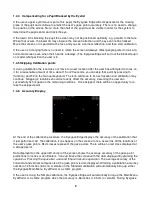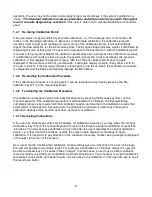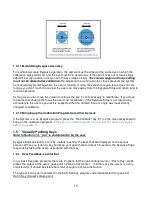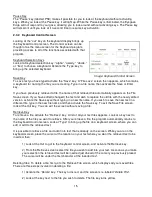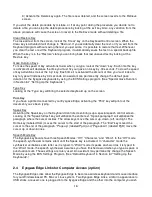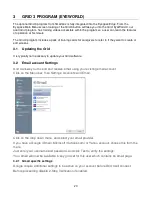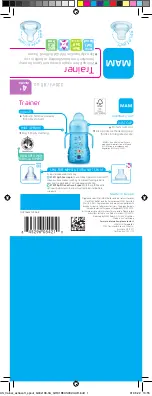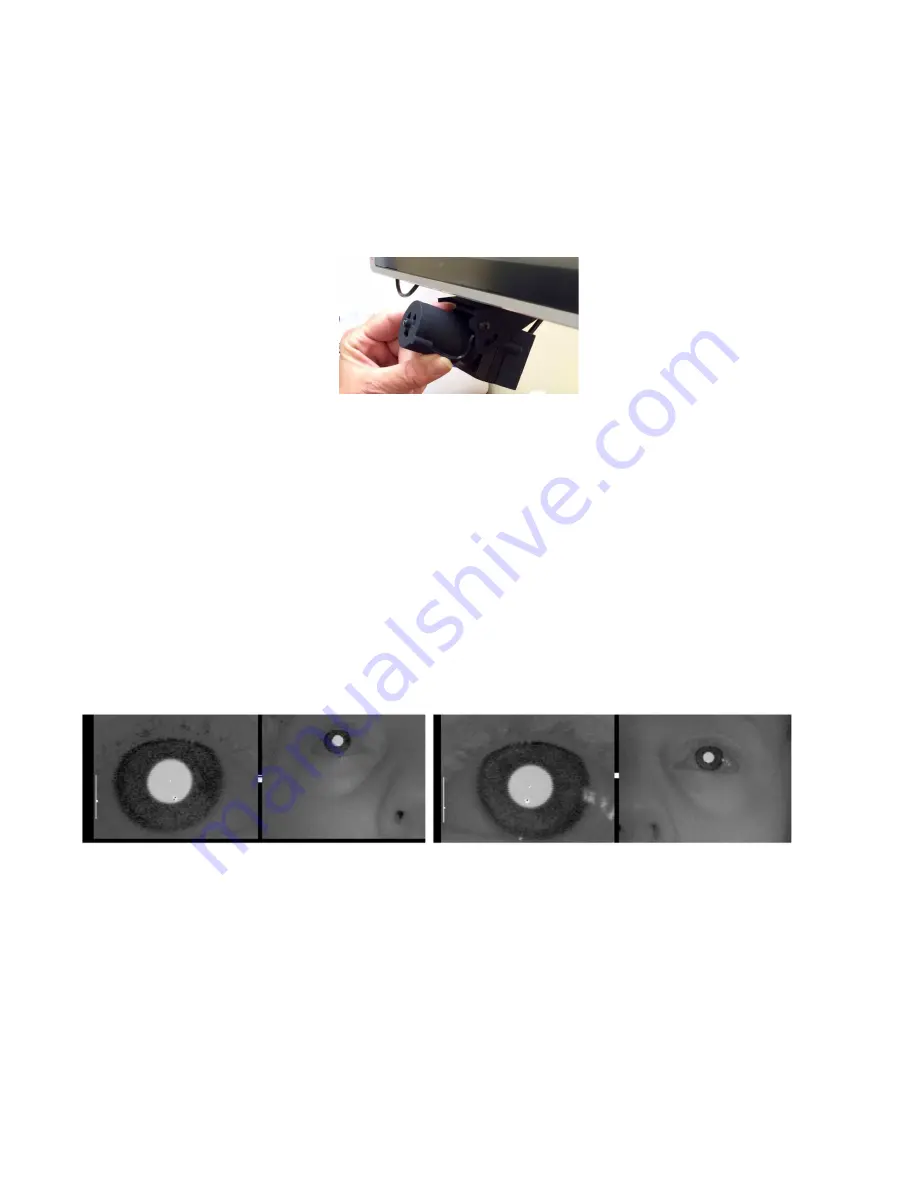
5
Use the full camera image (image to the right) to help locate the eye as you adjust the camera’s focus
and angle. Loosen the locking nut on the side of the camera bracket then adjust the camera angle to
point the camera toward the user’s eye.
The camera moves up and down, but not side-to-side. Move
the screen if you need to adjust side-to-side position.
Adjust the camera focus by rotating the focus ring until the image is clear. It may be necessary to re-
adjust the camera angle in order to get a clear image of the eye.
1.4
Calibrating the Eyegaze Edge
Before the Eyegaze Edge can track the user’s eye movements and respond accurately, it must “learn”
several optical characteristics of his particular eye. It calibrates to the user’s eye by observing the eye
as he looks at a small icon on the screen as it moves to 5 or 9 locations. The calibration program
predicts the user’s gaze point anywhere on the screen by analyzing the images of the user’s eye when
he is looking at these known points.
1.4.1 Calibration Procedure
It is important to notice which eye the camera is focused on, since the Eyegaze Edge will not be able to
predict accurately if the user switches eyes without recalibrating. The eye image display is like looking
in a mirror: what appears to be the left eye is, in fact, the left eye. What appears to be the right eye is
the right eye.
Left eye images
Right eye images
If the user switches eye inadvertently, simply move the screen to the side to again focus on the correct
eye. There is no need to recalibrate if you again capture the correct eye image.
Do not refocus the
camera or you will have to calibrate again!
Basically, if you don’t touch the camera there’s no need to
recalibrate unless the user wishes to switch eyes! Calibration is measuring the shape of the eye.
Moving away from the screen for whatever reason does not negate the calibration since the eye does
not change shape.
As you position the Eyegaze Edge, pay attention to reflections of light on the eye from sources other
than the system’s LED. Ambient infrared light on the surface of the eye can impact the Edge’s ability to
predict eye fixations accurately, particularly if the reflection sits on top the pupil. If an IR reflection is on








